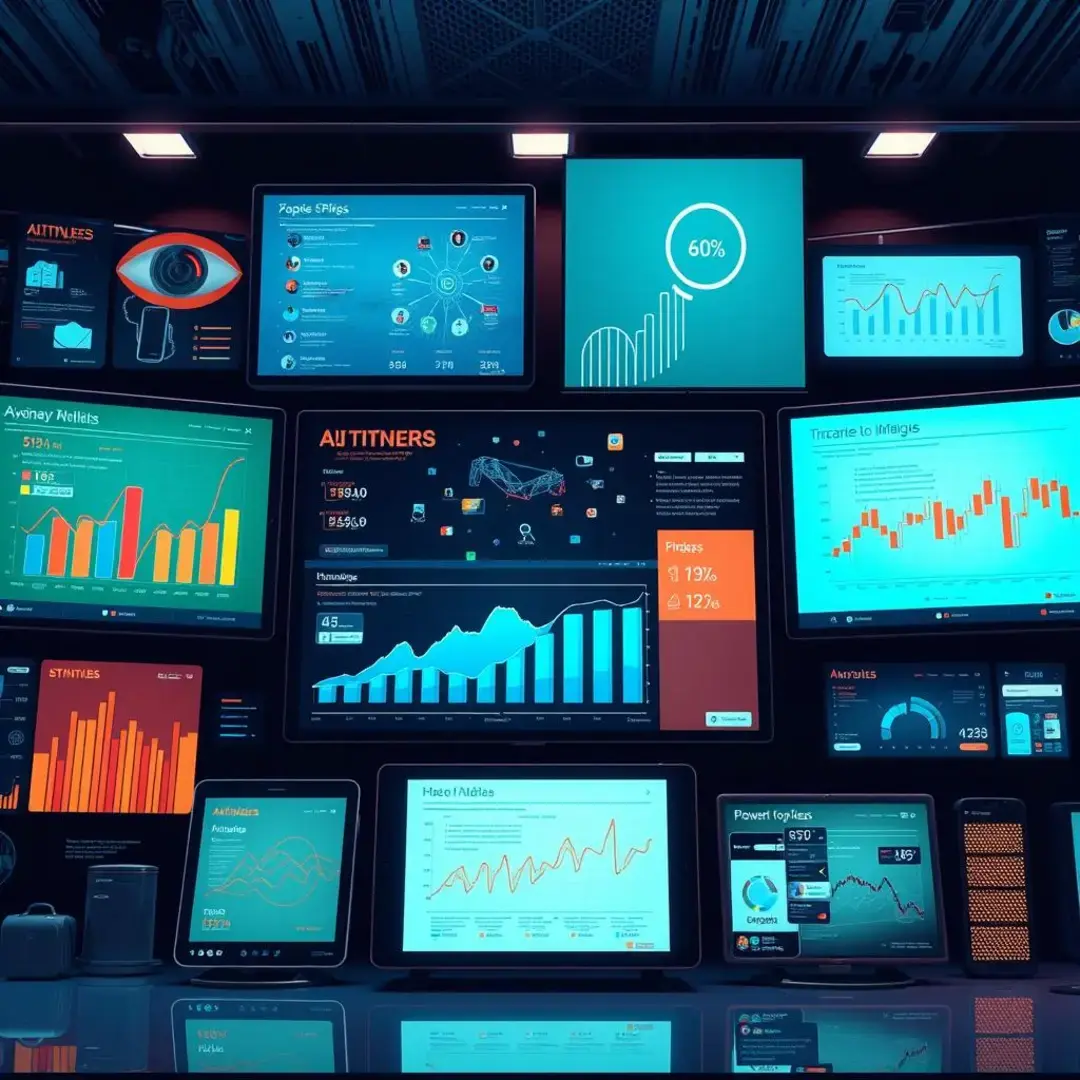Advertising: The Art of Promoting Products
Understanding the Nuances of Advanced Advertising

Targeting and Segmentation in the Modern Age
Behavioral targeting has revolutionized how products reach their intended audience. By analyzing user behavior online, advertisers can tailor their content to engage potential customers effectively. This method not only enhances the relevancy of ads but also increases conversion rates significantly. As a result, businesses can maximize their advertising budget, ensuring that every penny spent yields favorable outcomes.
Unlike demographic segmentation, which focuses on statistics like age and gender, psychographic segmentation delves deeper into the emotional and psychological attributes of consumers. This approach allows brands to create tailored marketing strategies that resonate with specific groups, enhancing the likelihood of brand loyalty. By understanding the values, interests, and lifestyles of their target audience, marketers can craft compelling narratives that speak directly to the hearts of potential customers.
Predictive analytics plays a crucial role in modern advertising strategies by leveraging historical data to forecast future consumer behaviors. With advanced algorithms, businesses can identify patterns and trends that help in making informed targeting decisions. By anticipating what consumers are likely to respond to, brands can optimize their campaigns and improve overall marketing effectiveness. This strategic foresight transforms advertising from a reactive to a proactive endeavor, enabling businesses to stay ahead of the competition.
Beyond Traditional Media: Exploring New Channels
Influencer marketing has emerged as a powerful channel in the digital advertising landscape. Originally centered around social media personalities, this strategy has evolved to include micro-influencers and niche communities. Brands leverage influencer trust and authority to reach audiences that traditional advertising might miss, resulting in meaningful engagement and conversions. By aligning with influencers whose values resonate with their target market, businesses can amplify their message and create impactful brand associations.
Programmatic advertising automates the buying and selling of online ads, optimizing the process for efficiency and effectiveness. This technology uses data to determine the best ad placements in real time, allowing for targeted outreach to potential customers. The benefits of programmatic advertising include increased transparency, better ROI, and the ability to reach audiences across multiple platforms seamlessly. As a result, businesses can maintain consistent messaging while maximizing their advertising spend.
Augmented reality (AR) is transforming the advertising game by creating immersive experiences that captivate audiences. Brands are now integrating AR into their campaigns, allowing consumers to interact with products in innovative ways. From virtual try-ons to interactive brand stories, AR fosters deeper connections between consumers and brands. This cutting-edge technology not only enhances consumer engagement but also provides valuable data on user interactions, helping brands refine their strategies.
Crafting Compelling Advertising Campaigns

Developing a Strong Value Proposition
A strong value proposition is at the heart of any successful advertising campaign. This clear statement articulates what makes a product unique and why consumers should choose it over the competition. Effectively communicating these unique selling propositions (USPs) requires a deep understanding of the target audience’s needs and desires. When executed correctly, a well-crafted USP can significantly boost brand visibility and galvanize consumer interest, setting the stage for successful conversions.
Emotional branding is an essential technique that taps into the feelings and sentiments of consumers. By establishing an emotional connection, brands can enhance consumer loyalty and set themselves apart in a crowded market. This approach involves using storytelling and evocative imagery to resonate with audiences on a personal level, making the brand memorable and relatable. As consumers increasingly seek authentic experiences, the power of emotional branding cannot be underestimated in driving purchasing decisions.
Consistency in messaging across all marketing channels fosters trust and reliability among consumers. When a brand’s messaging is coherent and aligns with its values and mission, it strengthens customer perception and loyalty. Brands that communicate consistently are more likely to create enduring relationships with their audience. This long-term brand loyalty not only leads to repeat purchases but also encourages word-of-mouth referrals, greatly enhancing brand reputation and reach.
Creative Execution and Content Strategy
Storytelling in advertising goes beyond mere promotion; it engages the audience by creating a narrative that captivates their attention. By weaving a compelling story around a product, brands can evoke emotions and encourage consumers to connect on a deeper level. This practice not only makes advertisements more enjoyable to watch but also helps consumers remember the brand long after the ad is over. Effective storytelling can turn mundane advertisements into memorable experiences.
Visuals play a pivotal role in how advertising messages are perceived and retained. High-quality imagery and design elements capture attention and create an immediate understanding of the brand’s message. In a world flooded with information, striking visuals can cut through the noise and convey ideas effectively. Advertisements that prioritize visual communication often yield better engagement and response rates, making them a cornerstone of modern advertising strategies.
Copywriting is an art that combines creativity and strategy in advertising. Persuasive copy captures the essence of a brand while urging the audience to take action. The choice of words can evoke emotions, spur curiosity, or drive home a product’s advantages. In a digital landscape where consumers are bombarded with information daily, strong copywriting serves as a guiding light, helping brands articulate their messages with clarity and impact.
Measuring and Optimizing Advertising Performance

Key Performance Indicators (KPIs) for Advanced Analysis
While clicks and impressions have long served as fundamental metrics in advertising, the landscape has evolved to prioritize deeper measures of success. Engagement metrics—such as shares, comments, and time spent on content—provide a richer understanding of how well an audience interacts with an advertisement. Additionally, tracking conversions helps determine whether advertising efforts lead to desired actions, such as purchases or sign-ups. Therefore, adopting a holistic view of performance metrics is essential for optimizing advertising strategies.
Attribution modeling enables brands to assess the effectiveness of their marketing channels—a crucial element in optimizing advertising efforts. By identifying which touchpoints contribute most significantly to conversions, marketers can allocate resources more effectively. This nuanced understanding not only improves campaign performance but also informs future strategies. With multiple channels available today, a clear attribution model becomes indispensable for data-driven decision-making.
Data visualization transforms complex advertising data into understandable insights. By representing metrics visually, businesses can quickly grasp performance trends and identify areas needing improvement. This approach not only enhances reporting clarity but also facilitates informed discussions among stakeholders. Ultimately, the ability to visualize data empowers brands to act decisively and capitalize on advertising opportunities in real time.
Advanced Optimization Techniques
A/B testing remains one of the most effective techniques for optimizing advertising campaigns. By comparing two versions of an ad or campaign element, brands can determine which performs better based on real user interactions. This method allows for continuous improvement, ensuring that advertising strategies evolve based on data-driven insights. The implementation of A/B testing fosters a culture of experimentation, enabling brands to refine their messaging and approach continually.
Multivariate testing takes optimization a step further by assessing multiple variables simultaneously. This technique enables brands to understand how different combinations of elements contribute to overall campaign performance. By analyzing the interactions between various factors, marketers can uncover insights that A/B tests alone might miss. As a result, multivariate testing paves the way for more sophisticated optimization strategies, leading to significantly improved campaign results.
Predictive modeling employs historical data to forecast future outcomes in advertising. By identifying trends and patterns, brands can make informed decisions about their advertising strategies and budget allocation. This approach not only enhances the precision of marketing efforts but also helps companies anticipate market changes proactively. Ultimately, predictive modeling equips marketers with the foresight needed to stay competitive in a rapidly evolving landscape.
The Future of Advertising: Emerging Trends and Technologies

Artificial Intelligence (AI) and Machine Learning (ML) in Advertising
Artificial Intelligence (AI) and Machine Learning (ML) are transforming how advertising campaigns are planned and executed. Automated campaign optimization tools analyze vast amounts of data to make real-time adjustments, ensuring that ads reach the right audience at the right time. This technology reduces the need for manual intervention and allows marketers to focus on strategy rather than nitty-gritty execution. As AI continues to evolve, its potential in refining advertising efforts will only grow.
Machine Learning enables brands to create highly personalized advertising experiences tailored to individual consumer preferences. By analyzing user behavior and demographic data, ML algorithms can deliver targeted messages that resonate with specific audiences. This level of personalization not only improves engagement rates but also fosters a deeper connection between brands and consumers. As expectations for bespoke experiences rise, leveraging ML becomes increasingly critical in modern advertising.
While AI offers remarkable benefits for advertising, it also raises important ethical considerations. Concerns about data privacy, algorithmic bias, and the potential for manipulation highlight the need for responsible AI use in advertising. Brands must navigate these ethical challenges carefully to maintain consumer trust and uphold their reputations. As the advertising industry embraces AI technology, fostering transparent practices will ensure a positive impact on consumers and society at large.
The Metaverse and Web3: New Frontiers for Advertising
The rise of the metaverse presents exciting opportunities for innovative advertising experiences. Brands are beginning to explore how immersive environments can be leveraged to engage consumers in unprecedented ways. Virtual events, interactive product showcases, and branded experiences within gaming worlds allow for deeper consumer interactions. As businesses adapt to this new frontier, creative exploration will be vital in connecting with audiences in the metaverse.
Web3 technologies are reshaping the advertising landscape, providing decentralized platforms that empower consumers and brands alike. This shift allows for greater transparency, as consumers gain more control over their data and how it is used in advertising. Brands that embrace this model can develop more authentic connections with their audiences, fostering loyalty and trust. As decentralized advertising gains traction, the industry must balance innovation with ethical considerations to ensure a sustainable future.
As digital advertising continues to evolve, staying adaptable is vital for brands aiming to make a mark. New technologies, platforms, and consumer behaviors constantly reshape the terrain, requiring marketers to remain agile. Continuous learning and experimentation will be crucial in leveraging emerging trends effectively. By embracing change and innovation, brands can navigate the complexities of the advertising landscape, ensuring they remain relevant and competitive in the digital age.












